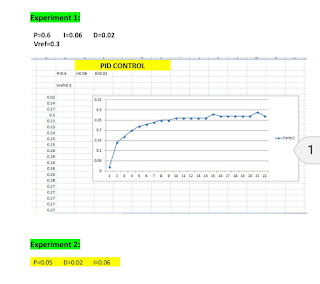#PID_Controllers:
#BY:# Aaryan GUPTA Date: 09.01.2018
Controlling whole system by PID control Practically experiment on PID control by #Gain_tanning method
#P_terms: P terms is proportional to current value of the SP – Y (t) = E (t) Where, SP = set point, Y (t) = feedback point If E (t) Large and positive Control output is directly proportional to Large or Positive
Controlling whole system by PID control Practically experiment on PID control by #Gain_tanning method
#P_terms: P terms is proportional to current value of the SP – Y (t) = E (t) Where, SP = set point, Y (t) = feedback point If E (t) Large and positive Control output is directly proportional to Large or Positive
#I_terms: account for past value of
SP – Y (t) = E (t) Error Any Residual SP – Y (t) error, integral terms seeks to eliminate the residual error
SP – Y (t) = E (t) Error Any Residual SP – Y (t) error, integral terms seeks to eliminate the residual error
#D_terms: D terms is a best estimate for eliminating the future value of the SP – Y (t) = E (t) Error Tuning by gain Method We are observed what effect and variation on PID control tuning of P, I and D.
#Conclusion : Practically experiment on PID control by Gain tanning method Experiment 1 is suitable for final PID control where PID value is P= 0.6, I= 0.06, D= 0.02 can’t put higher, After many experiments perform on gain tuning method we observed that we value of I integral and D , P terms put higher than I and D terms .



No comments:
Post a Comment
Note: Only a member of this blog may post a comment.